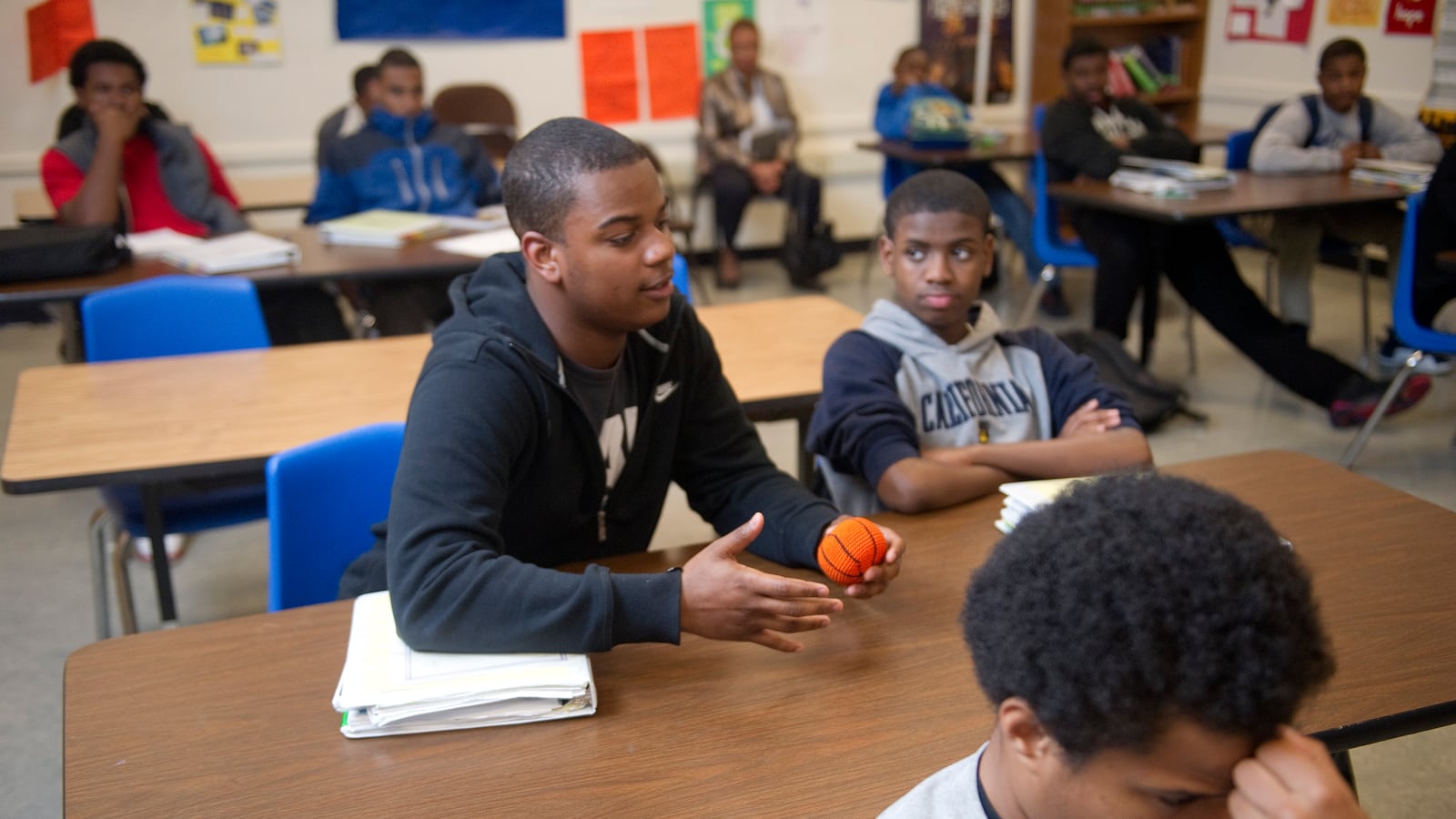An Oakland initiative aiming to better support black male students substantially reduced their high school dropout rate, according to a study released Monday.
The research is good news for efforts to offer culturally relevant teaching and targeted support for students of color. It follows a study from the same pair of researchers — Stanford professor Tom Dee and Emily Penner of the University of California, Irvine — who found that participating in an ethnic studies class in a San Francisco high school substantially boosted students’ attendance and grades.
“What those studies have really underscored for me is the promise of educational strategies that focus on affirming students, making them feel belonging, making them feel critically engaged in the classroom,” said Dee. “For many historically marginalized students, schools feel highly alienating, and I think both programs work to remediate that.”
The paper focuses on the work of Oakland Unified School District’s African-American Male Achievement initiative. “The district was disproportionately under-serving black boys,” said Chris Chatmon, a former teacher and principal who led that work and now advises the district’s Office of Equity. “When you looked at all the positive academic indicators, black boys were at the bottom.”
To help address that, a number of Oakland schools added classes during the regular school day that were taught by black male educators and meant for black boys. The class served as the center of a new peer group for students, used a curriculum that emphasized black history and culture, and offered personalized career and college guidance.
“The class is an opportunity for black children to really begin to lift up their cultural prosperity and history — beginning to understand that our history did not start from slavery,” said Chatmon. The goal, he said, was to help make students “college, career, and community ready.”
The New York Times profiled the approach in 2016, describing one class period in which students examined — and challenged — negative stereotypes about black men and boys, analogizing it to mind control in the movie “The Matrix.”
“The Matrix is there to mess you up,” explained one 13-year-old. “It’s a very, very dark world, but you can’t be afraid to be a source of light.”
Researchers Dee and Penner studied the effects of the program in six Oakland high schools. They examined whether high school dropout numbers fell in a particular grade and school when the program become available, comparing that to changes in schools without the program.
They found that the initiative reduced the dropout rate for black boys from 8.5% to 4.9% — a substantial effect. For the average high school grade with 60 black boys, that translates into two fewer students dropping out.
The Oakland program did not include girls, a fact that has sparked criticism of similar initiatives. But the researchers found evidence that the program may have had spillover benefits for black girls, too. Their dropout rate fell from 6.4% to 4.6% when the program was made available to black boys in their grade.
It’s not clear what pieces of the Oakland program made a difference, but the results line up with Dee and Penner’s research in San Francisco. A number of other studies have also shown that black students benefit in a variety of ways — higher test scores, lower suspensions, and greater rates of high school completion and college-going — when taught by black educators. A study on the Chicago program Becoming a Man, which offers small group counseling to young men focusing on social-emotional skills like self control, found that it improved academic outcomes and reduced arrest rates for violent crime.
“This report will give policy folk, superintendents, and school boards the kind of framing and quantitative data … to begin to adopt programs like African-American Male Achievement,” said Chatmon.
The initiative has since expanded to 24 Oakland schools, including elementary and middle schools, Chatmon said. The district has also launched initiatives focusing on black girls, Hispanic students, and Asian and Pacific islander students.
Meanwhile, Chatmon has created his own nonprofit to help spread the model to other districts, including Seattle, and has received support from education philanthropies including the Raikes Foundation. (Raikes was a funder of Dee and Penner’s study.)
Chatmon said his work has gotten a boost in attention from President Barack Obama’s My Brother’s Keeper initiative, now housed in the Obama Foundation, which is focused on the education of boys of color.
Dee and Penner are optimistic that programs like Oakland’s can expand and continue to make a difference.
“As with any promising intervention, the capacity of other districts to replicate the impact of this program is an open question,” they write. “The fact that the impact we document occurred as the program dramatically increased its operations across [Oakland] schools suggests that scalability is practical.”
Correction: A previous version of this story stated that Chatmon’s nonprofit had received funding from the Ballmer Group; that is not the case, although the two organizations have been in conversation about potential funding.


